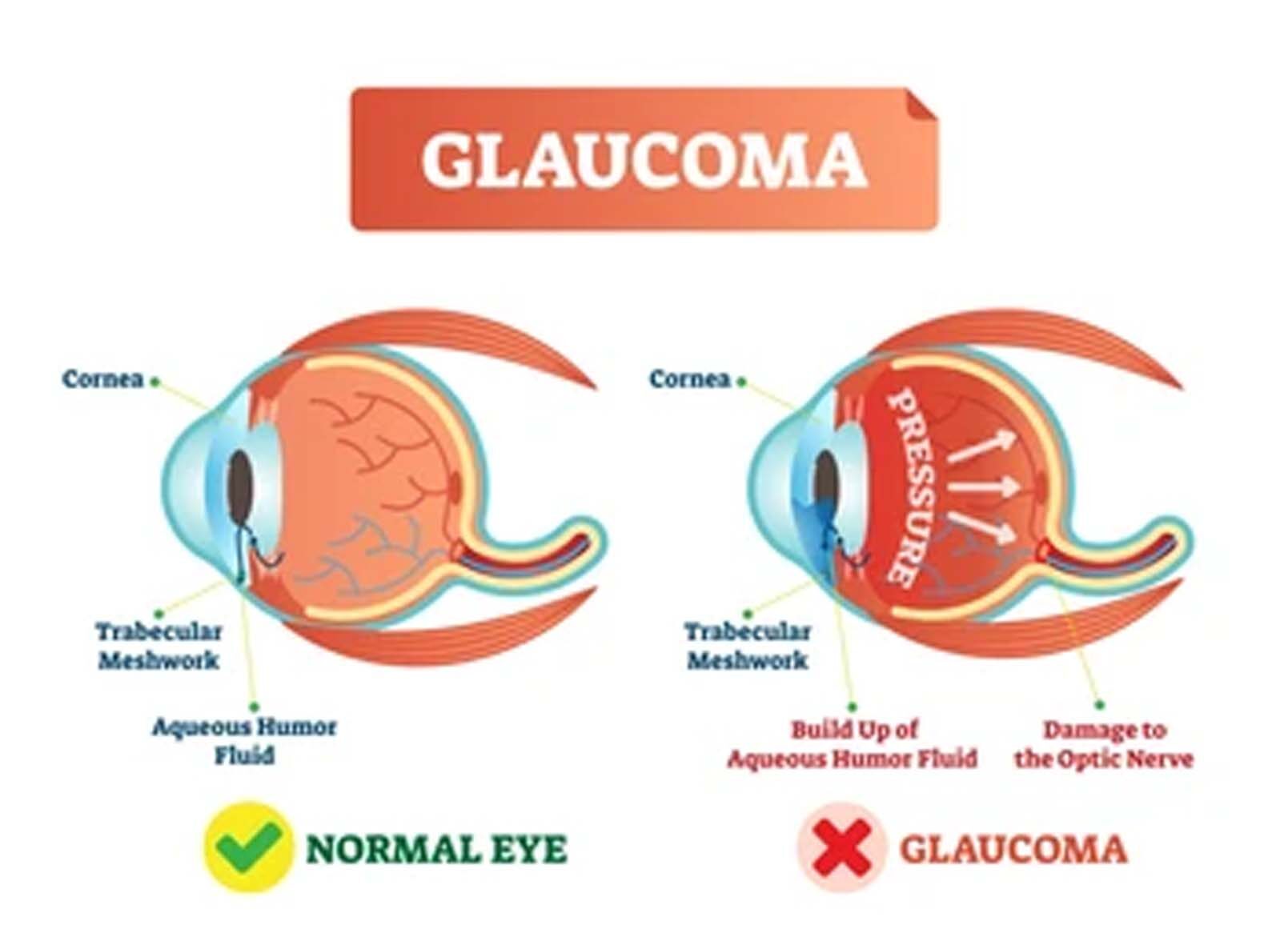Glaucoma is not a single disease
What is Glaucoma?

A leading cause of preventable vision loss and blindness
Glaucoma is a leading cause of preventable vision loss and blindness in older individuals in the United States and Canada and the second leading cause of blindness in the World. Glaucoma is not a single disease. It is actually a group of eye diseases that cause damage to the optic nerve due to an increase in pressure inside the eye, which is called intraocular pressure (IOP). Early detection and treatment of glaucoma are essential to slowing down the disease progression and preventing blindness.
However, symptoms of noticeable vision loss often only occur once the disease has progressed. Unfortunately, once vision is lost from the disease, it usually can’t be restored. Treatment can include medicated eye drops, pills, laser procedures and surgical procedures depending on the type and stage of glaucoma to regulate the IOP and slow down progression of the disease.

Risk Factors
Prevention is possible only with early detection and treatment. Since symptoms are often absent, regular eye exams are essential, particularly for individuals at risk of the disease.
While anyone can get glaucoma, the following traits put you at a higher risk:
- Age over 60
- Hispanic or Latino descent, Asian descent
- African Americans over the age of 40 (glaucoma is the leading cause of blindness in African Americans, 6-8 times more common than in Caucasians.)
- Family history of glaucoma
- Diabetes
- People with severe nearsightedness
- Certain medications (e.g. steroids)
- Significant eye injury (even if it occurred in childhood)
Types of Glaucoma
There are a number of types of glaucoma, some more acute than others. Most common type of glaucoma is primary open-angle glaucoma.
Detecting Glaucoma
During a routine comprehensive eye exam, your eye doctor will dilate your eyes to examine the optic nerve for signs of glaucoma and will also measure the intraocular pressure (IOP) with an instrument called Goldmann Tonometer.
IOP Measurement
Tonometry involves numbing the eye with drops and then gently pressing on the surface of the eye to measure the pressure. Since your IOP can fluctuate throughout the day and glaucoma can exist without elevated IOP this is not enough to rule out the disease. If there are signs of the disease, further testing will be performed.
Visual Field Test
A visual field test is designed to detect any blind spots in your peripheral or side field of vision. You will be asked to place your head in front of an instrument while looking ahead and indicate when you see a signal in your peripheral field of view.
Retina Testing
Your doctor may also measure the thickness of the cornea with an ultrasonic wave instrument in a test called pachymetry or use imaging techniques such as digital retina scanning or optical coherence tomography (OCT) to create an image of your optic nerve to look for glaucoma damage.
